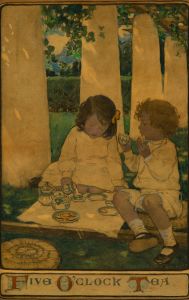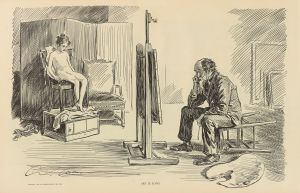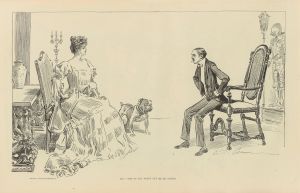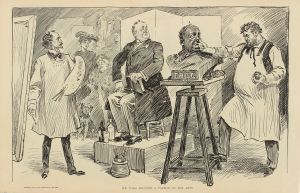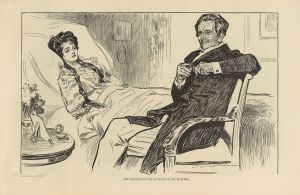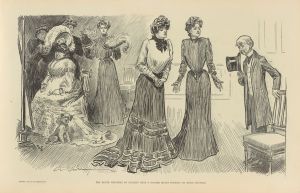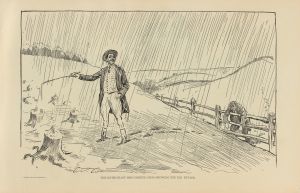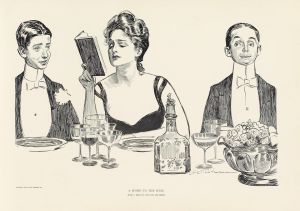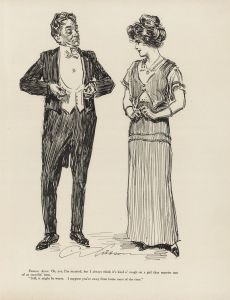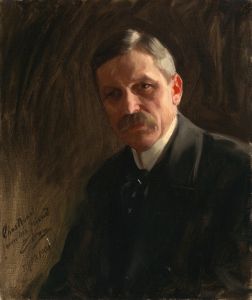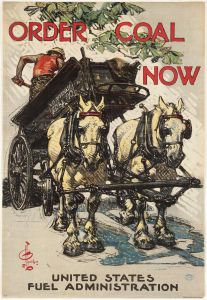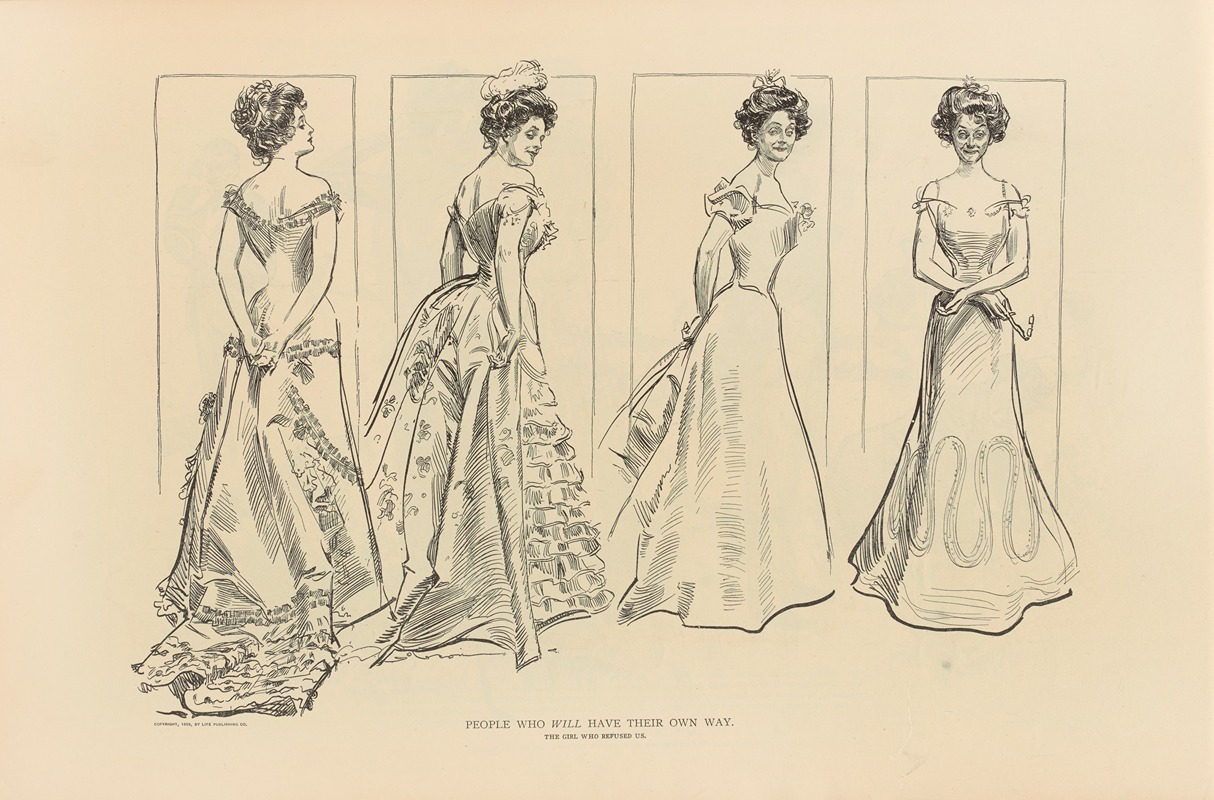
People who will have their own way
A hand-painted replica of Charles Dana Gibson’s masterpiece People who will have their own way, meticulously crafted by professional artists to capture the true essence of the original. Each piece is created with museum-quality canvas and rare mineral pigments, carefully painted by experienced artists with delicate brushstrokes and rich, layered colors to perfectly recreate the texture of the original artwork. Unlike machine-printed reproductions, this hand-painted version brings the painting to life, infused with the artist’s emotions and skill in every stroke. Whether for personal collection or home decoration, it instantly elevates the artistic atmosphere of any space.
"People Who Will Have Their Own Way" is an illustration by Charles Dana Gibson, an influential American graphic artist best known for his creation of the "Gibson Girl," a representation of the idealized American woman of the late 19th and early 20th centuries. Gibson's work played a significant role in shaping the visual culture of his time, and his illustrations were widely published in magazines such as Life, Scribner's, and Harper's.
Charles Dana Gibson was born on September 14, 1867, in Roxbury, Massachusetts. He studied at the Art Students League in New York City, where he honed his skills in drawing and illustration. Gibson's career took off in the 1890s when his illustrations began appearing in prominent publications. His work was characterized by its detailed line work and the ability to capture the nuances of social interactions and cultural trends.
The illustration "People Who Will Have Their Own Way" reflects Gibson's keen observation of human behavior and societal norms. While specific details about the creation date and context of this particular illustration are not extensively documented, it is consistent with Gibson's broader body of work that often depicted scenes of social life, fashion, and the dynamics between men and women during the Gilded Age and the Progressive Era.
Gibson's illustrations, including "People Who Will Have Their Own Way," often featured characters that embodied the social aspirations and tensions of the time. The "Gibson Girl," for instance, was portrayed as independent, confident, and fashionable, challenging traditional gender roles while still adhering to certain societal expectations. This duality made Gibson's work both popular and influential, as it resonated with the changing attitudes towards gender and class in America.
The impact of Gibson's work extended beyond the pages of magazines. His illustrations influenced fashion, with women emulating the style of the Gibson Girl, and even inspired theatrical productions and merchandise. Gibson's ability to capture the spirit of his era made his work a valuable cultural artifact, offering insights into the social dynamics and ideals of the late 19th and early 20th centuries.
Charles Dana Gibson continued to produce illustrations until his retirement in the 1930s. He passed away on December 23, 1944, leaving behind a legacy that continues to be studied and appreciated for its artistic merit and cultural significance. "People Who Will Have Their Own Way," like many of Gibson's works, remains a testament to his skill as an illustrator and his perceptive commentary on the society of his time.





